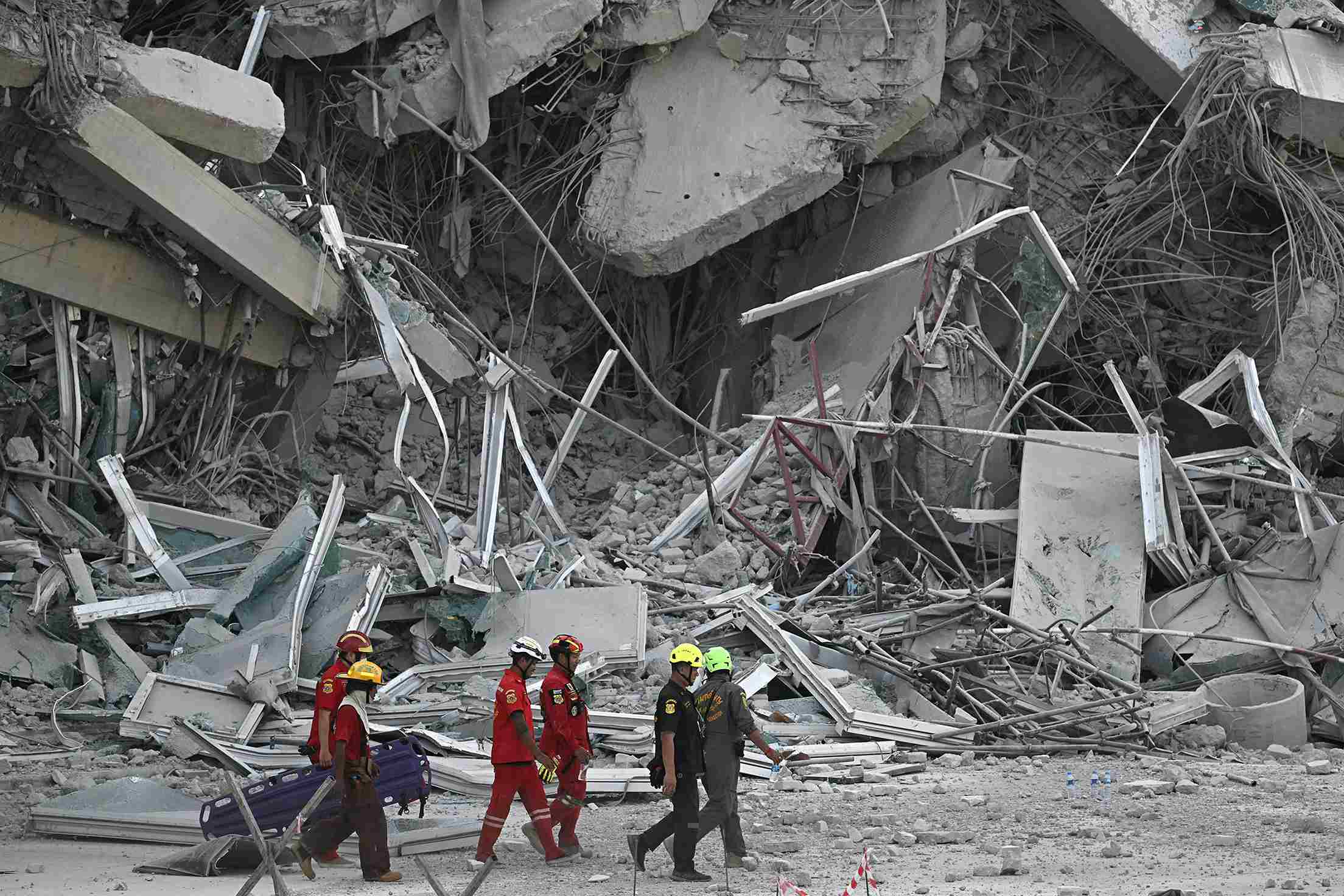Earthquake | Myanmar | Thailand | State of Emergency | International Humanitarian Aid

A powerful earthquake rocked central Myanmar on Friday, buckling roads in the capital, Naypyidaw, damaging buildings and forcing people to flee into the streets in neighbouring Thailand.
The 7.7-magnitude tremor hit northwest of the city of Sagaing on Friday afternoon at a shallow depth, the United States Geological Survey said. A 6.4-magnitude aftershock hit the same area minutes later.
Chunks of ceilings fell from buildings and roads buckled in Myanmar’s capital, Naypyidaw, a sprawling, purpose-built city with highways up to 20 lanes wide, according to AFP journalists.
The quake damaged buildings in the neighbouring Thai capital, Bangkok, and forced the suspension of some metro and light rail services in the city.
Thai Prime Minister Paetongtarn Shinawatra said on Friday she had interrupted an official visit to the southern island of Phuket to hold an “urgent meeting” after the quake, according to a post on X.
A multi-story structure collapsed after the first tremor, sending the crane on top toppling to the ground and a massive plume of dust into the air.
Emergency responders say two people have been found dead, and an unknown number of others are still under the rubble of a building that collapsed after a massive earthquake hit the capital, Bangkok.
Rescue worker Songwut Wangpon told reporters another seven people had been found alive, as he spoke outside the tall pile of rubble that was once a high-rise building under construction.
Tremors were also felt in China’s southwest Yunnan province, according to Beijing’s quake agency, which said the jolt measured 7.9 in magnitude.
Earthquakes are relatively common in Myanmar, where six strong quakes of 7.0 magnitude or more struck between 1930 and 1956 near the Sagaing Fault, which runs north to south through the centre of the country, according to the USGS.
A powerful 6.8-magnitude earthquake in the ancient capital Bagan in central Myanmar killed three people in 2016, also toppling spires and crumbling temple walls at the tourist destination.
The breakneck pace of development in Myanmar’s cities, combined with crumbling infrastructure and poor urban planning, has also made the country’s most populous areas vulnerable to earthquakes and other disasters, experts say.
The impoverished Southeast Asian nation has a strained medical system, especially in its rural states.
In a recent update, the junta made a rare request for international humanitarian aid and declared a state of emergency across six regions: Sagaing, Mandalay, Magway, northeastern Shan State, Naypyidaw, and Bago.
AFP reporters saw junta chief Min Aung Hlaing arrive at a hospital in Naypyidaw where the wounded were being treated after the 7.7-magnitude quake hit central Myanmar.
“We want the international community to give humanitarian aid as soon as possible,” junta spokesman Zaw Min Tun told AFP at the hospital.
Casualty numbers have yet to emerge, but the fact that the isolated military government is appealing for help — which it rarely does after natural disasters — suggests they could be on a large scale.
Zaw Min Tun said blood donations were needed for patients in Mandalay, Naypyidaw and Sagaing.
(Via RSS with inputs from AFP, AP)
Read More Stories
Kathmandu’s decay: From glorious past to ominous future
Kathmandu: The legend and the legacy Legend about Kathmandus evolution holds that the...
Kathmandu - A crumbling valley!
Valleys and cities should be young, vibrant, inspiring and full of hopes with...
The majestic Upper Mustang and its water troubles
The wind stirs heavily across the barren landscape as our bus pushes along...